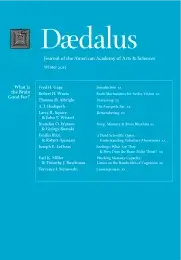Remembering
A major development in understanding the structure and organization of memory was the identification of the medial temporal lobe memory system as one of the brain systems that support memory. Work on this topic began in the 1950s with the study of the noted amnesic patient H.M. and culminated in studies of an animal model of human memory impairment in the nonhuman primate. These discoveries opened new frontiers of research concerned with the functional specialization of structures within the medial temporal lobe, the existence of multiple memory systems, the process of memory consolidation, and the role of neural replay and sleep in the consolidation process. This work also led to new insights about how and where memories are ultimately stored in the brain. All of this research has improved our understanding of how memory is affected by normal aging and why it is so profoundly impaired by the pathological processes associated with dementia.
Memory is a large topic, growing out of the fundamental fact that the experiences we have can modify the nervous system such that our mental life and our behavior can be different than they were in the past. The study of memory ranges widely–from cellular and molecular questions about the nature of synaptic change to questions about what memory is, whether it is one thing or many, which brain systems support memory, and how those systems operate. We will consider in particular the structure and organization of memory with a focus on brain systems.
The idea that functions of the nervous system can be localized was well accepted by the end of the nineteenth century. Yet these ideas concerned mainly sensory-motor functions and language and did not speak to the topic of memory itself. In the early twentieth century, an influential program of research in the rat concluded that memory is not localized but is distributed through the neocortex (the outer layer of the cerebral hemispheres of the brain of mammals involved in higher functions such as sensory perception, attention, memory, and action), such that each region contributes equivalently to the whole.1 Memory was thought to be distributed and well-integrated with intellectual and perceptual functions, and no particular brain region was thought to be dedicated to memory function. . . .
Access the full volume here.
